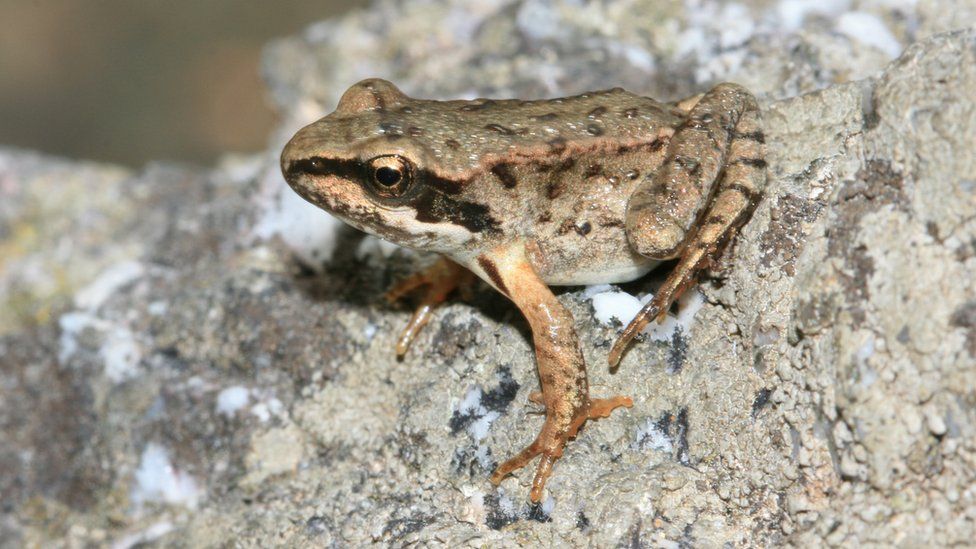ARTICLE AD BOX
 Image source, Christoph Vorburger
Image source, Christoph Vorburger
The European common frog also benefitted from the programme
By Rowenna Hoskin
Climate and science reporter, BBC News
Switzerland has reversed the decline of more than half of endangered frogs, toads, and newts in one region, research finds.
After conservationists dug hundreds of new ponds in the state of Aargau, amphibian numbers significantly increased.
The European tree frog population in particular "exploded", scientists say.
Scientists hope this method could be used globally as pond building is simple and effective.
Globally amphibian populations are in significant decline due to factors including habitat loss, urbanisation, road infrastructure, disease and invasive species.
In 1999 Aargau decided that a mass conservation effort was needed to combat the loss of amphibians. The collapse of the European tree frog was of particular concern.
State authorities, non-profit organizations, private landowners and hundreds of volunteers worked for 20 years to build 422 ponds in five regions in Aargau.
Image source, Benedikt R Schmidt
Image caption,Ponds were dug to create new habitats for the amphibians to live in
Older ponds had become unsuitable for some amphibians due to lack of space, a high number of predators, and dense vegetation.
By creating new ponds, the conservationists gave the species more space to thrive.
Of the eight endangered species, 52% increased their regional populations and 32% were stabilised.
Lead author of the study Dr Helen Moor told BBC News she was excited to see "such a clear increase" in numbers considering the simplicity of the solution.
"Species will come, they will settle and start using the space if you offer it to them," she said.
One of the species that dramatically increased was the tiny European tree frog.
Image source, Thomas Reich
Image caption,The European tree frog population 'exploded' after a conservation project in Switzerland
This frog likes to jump from shrubs to trees, Dr Moor explains, and is one of the most mobile species, capable of traveling several kilometres.
It needs a very specific habitat to thrive, preferring shallow ponds created by meandering rivers on floodplains.
But this type of habitat has disappeared in many places in Switzerland, leading to the species' decline.
Switzerland, like the UK, has high population density with large road and railway networks, and much of the non-urban land is intensely farmed, Dr Moor explains.
"Habitat loss is one of the main problems, and just by addressing that we could see the difference it made, and begin the recovery of these species," she says.
Over 20 years the regional population of the European tree frog quadrupled in one area. It could only be found at 16 sites in Reusstal in 1999 but by 2019 the species was living in 77 places.
The overwhelming regional increase in almost every pond-breeding amphibian species proves how successful habitat creation can be, the study shows.
"The key message is that it pays to do something, even if it feels overwhelming," Dr Moor said.
The ponds will continue to be monitored and managed to ensure the species thrive.
Some ponds will need to be cleared of vegetation and drained to remove predator larvae that threaten tadpoles.
Dr Moor hopes this conservation success will convince other landowners to create ponds and diversify habitats.

 2 years ago
43
2 years ago
43








 English (US) ·
English (US) ·